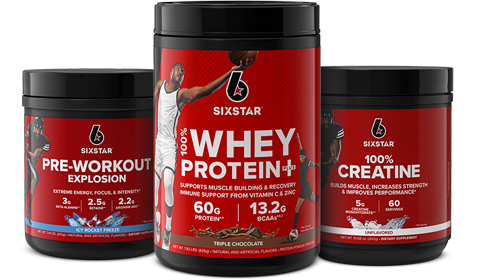For those of you continuing to adapt and adjust to life during the coronavirus pandemic, you’ve already proven to yourself that you’re capable of enduring. So, if you’re looking to build endurance and boost stamina as part of your personal fitness journey, the good news is that you can use those same coping skills and tools that you’ve developed to survive and thrive during COVID-19 and implement them in your fitness regimen.
“The drive to persevere is something some are born with, but it’s also a muscle everyone can learn to flex,” according to The New York Times “Build Mental Endurance Like a Pro” article. “In a way, everyone has become an endurance athlete of sorts during this pandemic, running a race with no finish line that tests the limits of their exhaustion.”
Healthline points out that when it comes to exercise, the terms ‘endurance’ and ‘stamina’ can be used interchangeably, even though there are subtle differences between the two.
“Stamina is the mental and physical ability to sustain an activity for a long period. When people talk about stamina, they often use it to refer to the feeling of being peppy or energetic while doing an activity,” according to Healthline. “Endurance refers to your body’s physical capability to sustain an exercise for an extended period. It’s made up of two components: cardiovascular endurance and muscular endurance. Cardiovascular endurance is the ability of your heart and lungs to fuel your body with oxygen. Muscular endurance is the ability of your muscles to work continuously without getting tired.”
Let’s take a look at eight tips for building your cardiovascular and muscular endurance, as well as your stamina.
START SLOW & KEEP IT STEADY
Runner’s World says that whatever your present endurance conditioning is, the key to building it is to go slow and steady.
“If there is one overarching principle of endurance-building, this is it,” according to a Runner’s World article. “Call it gradual adaption. That is, be consistent, be patient, and build up slowly. This principle applies to all circumstances and all runners – the beginner who’s trying to make it around the block four times, as well the 36-minute 10K runner who’s training for a first marathon with long runs that stretch to 12 miles, then 16, then 20.”
CREATE MINI-GOALS FOR YOURSELF
Sports psychologists recommend creating mini milestones on your way to bigger goals. By breaking a bigger goal down into smaller actionable ones that you can monitor daily, chances are you’ll be more likely to hit your major goal since you’ll be staying on target each and every day along the way. And if you get off track, you’ll know exactly what you need to do to correct course.
“Setting goals that are controllable makes it easier to adapt,” says Dr. Carla Meijen, a sports psychologist, to The New York Times. “If you set goals that are controlled by other people, goals that aren’t realistic or are tough or boring, those are much harder to adapt to.”
So, really check-in with yourself and create goals that are challenging, but not too difficult that you’ll get frustrated and want to give up. The key here is making sure that you’re excited to hit your goal, while enjoying the process, even if it is hard at times.

COMBINE STRENGTH TRAINING WITH CARDIO DAYS
“Most people reserve one day for strength and another day for cardio,” says Will Torres, a New York-based personal trainer and founder of the personal training studio, Willspace, in a Men’s Journal article. “Use a bench press, immediately followed by pull-ups, then run a mile as fast as you can… and repeat.”
By adding strength training to your cardio day, you’ll be able to build endurance since the more muscle you can get working, the more it will challenge your heart and cardiovascular system.
COMBINE THE OVERLOAD PRINCIPLE
“Another basic concept for building an effective fitness program is the overload principle,” according to Healthline. “This principle involves making gradual increases in either volume or intensity to continue improving your fitness.”
So, let’s say that you’d like to improve your run time for a 5K, 10K, or even a marathon, Healthline recommends gradually making your workouts more challenging by increasing either the distance you run, the speed you run, or the amount of time you run.
MIX UP YOUR WORKOUTS & KEEP AN OPEN MIND
“Routine is endurance’s number one enemy,” says Ben Wegman, a trainer at The Fhitting Room, in a Byrdie article. Wegman says it’s crucial for you to change up “your workouts and intervals to consistently challenge your body in new ways.”
Wegman recommends getting out of your comfort zone and trying boxing, yoga, or rock climbing. His reasoning is that getting out of your comfort zone, pushing your limits, and setting new goals will not only help increase your physical endurance, but will “open your mind to other areas in your life where you can go farther or succeed more than expected.”
An easy way to add variety to your typical workout regimen is try new workout classes at different studios. You’ll be able to learn from the different instructors and also experiment with classes you otherwise wouldn’t have considered taking. So, start getting comfortable outside of your comfort zone and make sure to mix up your workouts. This will also help you avoid overuse injuries.
REDUCE THE AMOUNT OF TIME YOU REST BETWEEN SETS
Men’s Journal says that on average men typically rest between 30 and 90 seconds in between sets. However, if you want to build your endurance, then you’ll have to sacrifice some of that recovery time.
“By the end of your sets, your muscles should be burning – you should be breathing heavily and sweating,” says Will Torres to the Men’s Journal. “Only take a break if you physically cannot continue.”
Torres recommends selecting a series of movements like 10 pull-ups, 10 squats, 10 push-ups, 10 sit-ups, and then doing three rounds of the series back-to-back, while taking minimal breaks.
ADD STRESS-RELIEVING ACTIVITIES TO YOUR WEEKLY ROUTINE
“Including stress-relieving activities in your weekly routine can help you relax and improves your ability to handle more intense workouts,” according to Healthline. “Two examples of relaxing activities include yoga and meditation.”
A study found that medical students who practiced six weeks of yoga and meditation had significant improvements in feelings of peace, focus, and endurance, according to Healthline.
“When aiming to build stamina, practicing mindfulness meditation is an effective tool to help manifest a positive mindset around pushing through discomforts and boredom,” says Rachel Gargiulo, a certified nutrition consultant at Nourishing Journey, in a Well+Good article. “Through this increased presence of mind that you’ll achieve, you can then work on telling yourself not to complain and to keep going when the circumstances are trying.”

GIVE YOUR BODY TIME TO REST AND RECOVER
“Your new stamina-building plan is going to involve a shift in the pace of your typical routine,” according to Well+Good. “If you don’t give your muscles enough opportunity to recover, your performance is sure to suffer due to fatigue and overuse.”
Well+Good says that recovery involves scheduling rest days off from training, eating a healthy and balanced diet, getting enough sleep, and stretching daily to promote muscular health.













